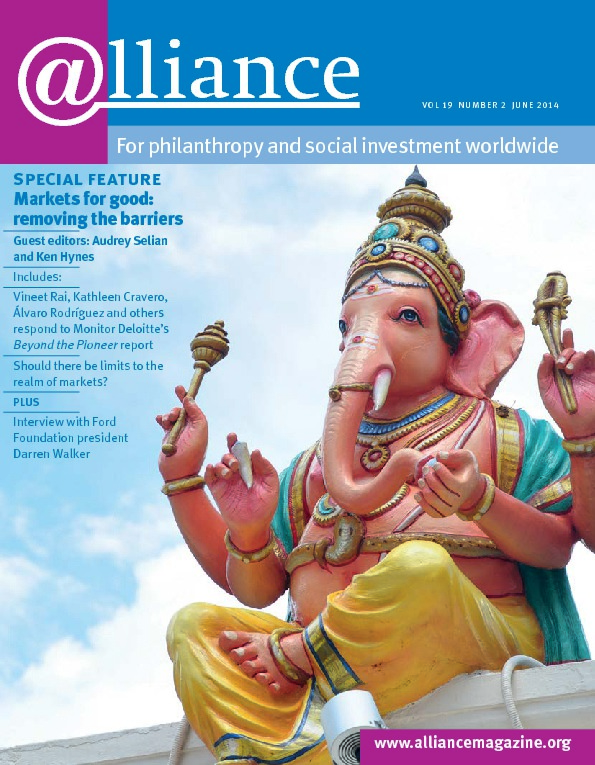If you’re looking at impact investing, do you see a glass half empty or a glass half full? It all depends which end of the looking glass you’re looking through. If you consider that the term wasn’t even invented ten years ago[1] and there are now countless impact investing funds – GIIN alone has almost 200 large institutional members in 30 different countries – you might see a glass half full. If you look at the volume of funds in impact investing compared to total investments and the scale of social problems to be solved in a material way, you’re more likely to see a glass half empty.
It seems to me that the authors of Beyond the Pioneer start with a glass half empty – seeing too few ‘inclusive businesses’ to benefit the poor managing to scale up sufficiently. Their aim is to remove the barriers so the glass can start to fill up.
If these inclusive businesses are to reach the required scale, it seems that ‘mainstreaming’ must be at least part of the answer – mainstream funds going into industries that have themselves become part of the mainstream. Interestingly, it is Álvaro Rodríguez in Mexico and Vineet Rai in India – both from countries where the social problems to be solved are substantial and not addressed with any level of scale by government – who most clearly express this mainstream vision. Neither has much time for external ‘do-gooders’ who think they can tell the poor what they ought to want and then try to sell it to them.
Contributors from more developed economies seem more inclined to see the need for a distinct set of investors to support a more clearly social set of businesses. Guest editors Audrey Selian and Ken Hynes call for impact investors to eschew competition and work together. Jane Newman and Hannah Goldie emphasize the need ‘to address the middle ground with investee-appropriate products’. Martin Brookes voices fears about the ethical consequences if charities start to be seen as ‘investment options’.
Perhaps what is needed is a clearer demarcation between those areas where needs could eventually be met through mainstream industries, for example where physical infrastructure is involved, such as housing and renewable energy, and areas where a special set of investors may likely be needed, and areas where subsidy, too, will and must play its part. Defining this last area is something that this issue of Alliance hasn’t tried to do, but I’d welcome readers’ thoughts. Would we want to see social impact bonds supporting Barnardo’s work with vulnerable children at risk of abuse?
Of course there will always be areas where people disagree: should microfinance be run as an ordinary business? Supporters of this idea point to the numbers of the ‘unbanked’ and the numbers that could be reached; opponents point to high interest rates and unscrupulous debt collection. But if the problems are to be solved, we will need to be sure that impact investing funds are focused where they are most needed.
1 Although Jed Emerson developed the concept of ‘blended value’ in the 1990s.






Comments (0)